Thorough digitalization –
How an SME reorganizes its entire production
Sistag AG has recognized the potential of bits and bytes, as the Swiss SME thoroughly examined its production from a digital perspective while modernizing a Flexible Manufacturing System (FMS) from Fastems. This approach resulted in interesting new experiences and ambitious plans.
The globally active Sistag AG, headquartered in Eschenbach (Canton Lucerne), manufactures isolation valves for a wide range of industries, including pulp and paper, food and beverage, wastewater treatment, and biogas/chemical plants. “In addition, we specialize in knife gate valves, known under the brand name Wey Valve. These valves are used in the petrochemical, oil production, and mining industries, among others. Our mechanical production here employs around 165 employees, producing approximately 25,000 to 30,000 knife gate valves annually,” says Manuel Schmidlin, Head of Manufacturing at Sistag.
An expert with high production automation level
Like many other Swiss SMEs, Sistag faces high manufacturing costs. Manuel Schmidlin notes, “Land is expensive, and labor costs are high. Moreover, finding skilled workers for production is challenging, so we have increasingly focused on in-house training.” To economically produce and manufacture, machines at Sistag must run almost non-stop. “We also have the advantage of being particularly strong in the field of special valves. Due to the relatively high level of automation here at Sistag, we can also compete in terms of pricing,” adds Schmidlin.
Modernization with a focus on digitization
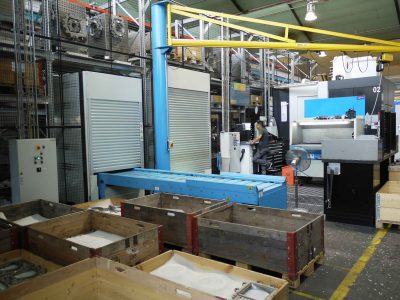
The MLS-MD (Multi Level System-Medium Duty) was completely updated in 2022, both mechanically and in terms of software, to the latest standards.
The housings, a core component for knife gate valves, are manufactured on two horizontal machining centers. In 2005, the company invested in a Flexible Manufacturing System (FMS) from Fastems, specifically a Multi-Level System (MLS), initially connected to an OKK HM 630. In 2010, the system was expanded to a total length of 35m, with a second OKK machine of the same type added.
In 2022, Sistag decided to modernize the MLS. Manuel Schmidlin explains, “The electronics were still running on 32 bits, and the system was essentially at ‘End of Life’ with no replacement parts available. During the upgrade to a 64-bit system, we conducted a complete retrofit, both in terms of controls and mechanics.” As Sistag has been pursuing a consistent digitization strategy for about four years, the FMS was not only updated with the Manufacturing Management Software (MMS) from Fastems but also placed significant focus on digitizing the entire production.
No overview of capacities and utilization
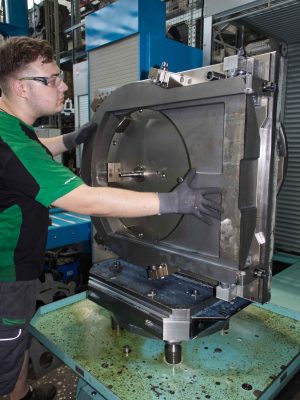
Currently, the FMS (Flexible Manufacturing System) has three loading and unloading stations, as well as two material stations, providing space on two levels for a total of over 74 machine pallets and 82 material pallets.
According to Manuel Schmidlin, the company has primarily grown historically in its 60-year history. Sentences like ‘We’ve always done it this way’ have been heard by the production manager many times.
“Our project business has significantly increased. When a customer orders valves today, it’s not three or four, but immediately 400 or 500. With our existing infrastructure, we were not able to plan such large orders efficiently from start to finish. We had great difficulty keeping our machine capacities under control, as we were still working with lists and practically had no overview of what was happening at what time and where the priorities were.
Therefore, our goal is to control our entire production with MMS as a central MES (Manufacturing Execution System).”
“The Terra Incognita” of Manufacturing Organization
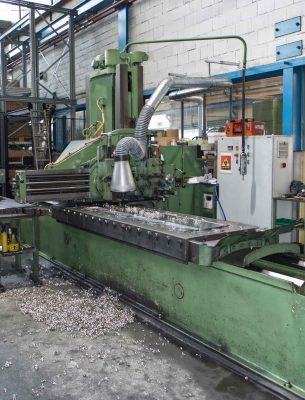
An integral part of the digitization strategy: Even older, non-network-capable machines, such as this metal planer, become a permanent component of the MES (Manufacturing Execution System) and thus the overall organization thanks to WCO (Wireless Connectivity Options).
The MMS from Fastems provides all the prerequisites for this digitization approach, as it is currently one of the most powerful solutions for planning, running, and monitoring automated machining production. The MMS automatically plans production up to 96 hours in advance while considering all necessary resources, such as raw materials, NC programs, and tools, including their tool life.
Manuel Schmidlin is fully aware that for consistently planned production, however, standalone machines, manual workstations, and inspection stations must eventually be included in the whole digitization process, in addition to the automated equipment. Not an easy task, as these areas are often still a “Terra Incognita” in a usual manufacturing organization. Nevertheless, at Sistag, this situation is set to change with the implementation of Fastems MES solution for non-automated equipment – Work Cell Operations (WCO).
Digital Planning of Non-Automated Production
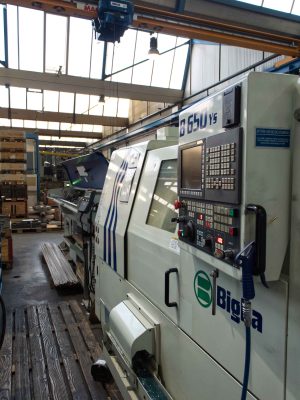
This turning/milling center is one of the machines that can be integrated into the MMS (Manufacturing Execution System) via a network interface, enabling seamless planning, execution, and monitoring of production.
Schmidlin explains, “We want to map the entire production flow in the MMS, including every single step, from cutting on a laser machine, planning, milling, drilling, and grinding to quality control.” WCO plays a crucial role in this strategy. WCO is a solution that allows the digitalization of non-automated, standalone machines, and processes. The software enables the organization and utilization tracking of capacities and work sequences for individual machines and work units (cells). WCO integrates NC programs and tool management for stand-alone machines, and the software is usable both as a standalone solution and in combination with pallet or part automation. In the initial phase, Sistag plans to connect 8 machines to WCO, with more planned to follow.
Full Integration into the Overall Organization
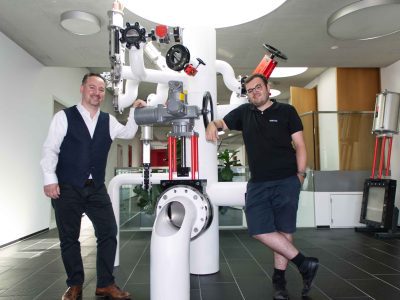
Gennaro Teta, Sales Manager of Fastems for Switzerland (left), and Head of Manufacturing Manuel Schmidlin closely collaborate in the digitalization project of Sistag AG.
Manuel Schmidlin provides a concrete insight into the potential of Fastems’ MES solution: “Each WCO represents a standalone machine or workstation, where several machines can also be grouped within a WCO. For example, we have grouped the lathes of a department in one WCO. Within the WCO groups, we can still distribute and coordinate tasks for each separate machine. All other standalone machines that can be connected to the internet are also directly connected to the software. However, we also have older machines, such as metal planners, which, as relatively simple manufacturing solutions, are not capable of connecting to the internet. However, they are suitable for integration into the overall organization with WCO, with the required production data and information transferred to WCO by employees through a tablet.”
“That’s something an ERP system can’t deliver,” says Schmidlin.
The MMS plans production with the WCO based on order data from the ERP system, similarly to the FMS, automatically scheduling production in individual departments and assigning priorities based on delivery dates. Machine operators then receive digital lists that they can work through based on priority levels. Status feedback to WCO, such as when a machine is set up or a production order starts, is provided either directly from a machine connected to the network or, in other cases, through the tablets used by operators.
“We remain flexible in this regard,” emphasizes Schmidlin, “because I can shift individual orders and assign new priorities if necessary. This was not possible before. Throughout this process, I can see the entire production planning and progress, machine utilization, and when the next orders take place, i.e., all organizationally relevant information and data that an ERP system cannot provide in this form.”
High Transparency Across the Entire Production
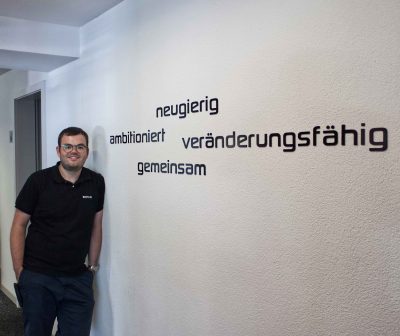
Manuel Schmidlin, Head of Manufacturing at Sistag AG, states, “We aim to map the entire production through MMS as the central MES. Even today, we are significantly more productive with fewer machines and employees. The increasing transparency enables us to optimize our production very selectively.”
To make the digitization strategy with the MMS and WCOs effective, from a production manager’s perspective, it is essential to start as early as possible and to first “clean up” the ERP system to transfer all necessary information to the MMS in the desired form.
“It took a while, but the effort is worthwhile because we gain an immensely high level of transparency with detailed data, even for non-automated machines and processes. An additional advantage in this context is that we only need a single interface from the MMS to the ERP, with the MMS then functioning as the MES. With a view to the continually growing project business, this is a huge step forward because we have a very high information density with valid operational data, enabling us to calculate more accurately, so we can adjust the master data in the ERP if they do not match.”
Further Investments in Automation
The digitization strategy is complemented by further automation implementation, for example, in December 2023, with an FPC-3000 (Flexible Pallet Container) from Fastems. Simultaneously, Sistag invests in another OKK machine, and the goal forward is there will no longer be any machines in production without automation.
“Often, companies, with automation from Fastems together with their MMS, already have a solution that provides them with some level of manufacturing transparency. However, such solutions typically overlook all manufacturing capacities in the automation environment. We have recognized this. Even today, we are significantly more productive with fewer machines and employees. The continuously growing transparency enables us to optimize the entire production process very selectively,” concludes Manuel Schmidlin.